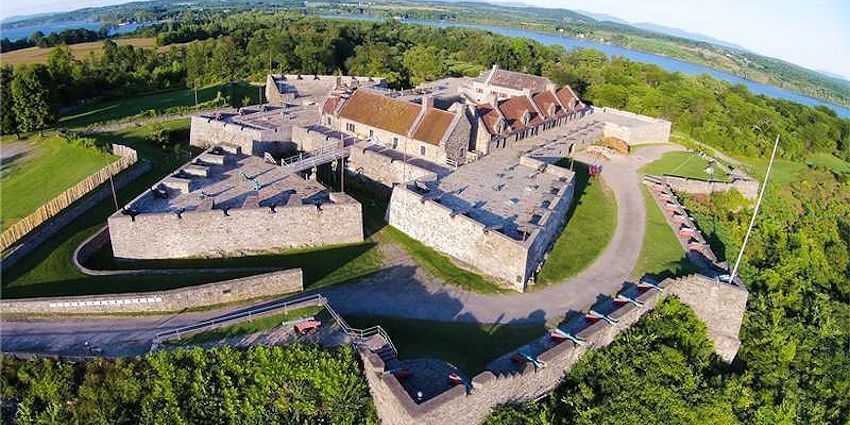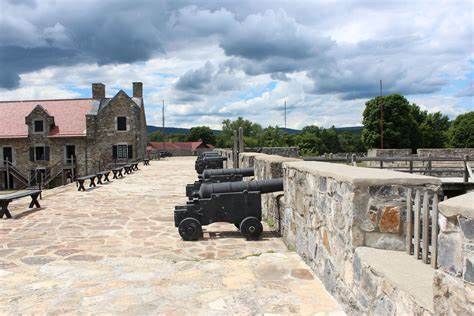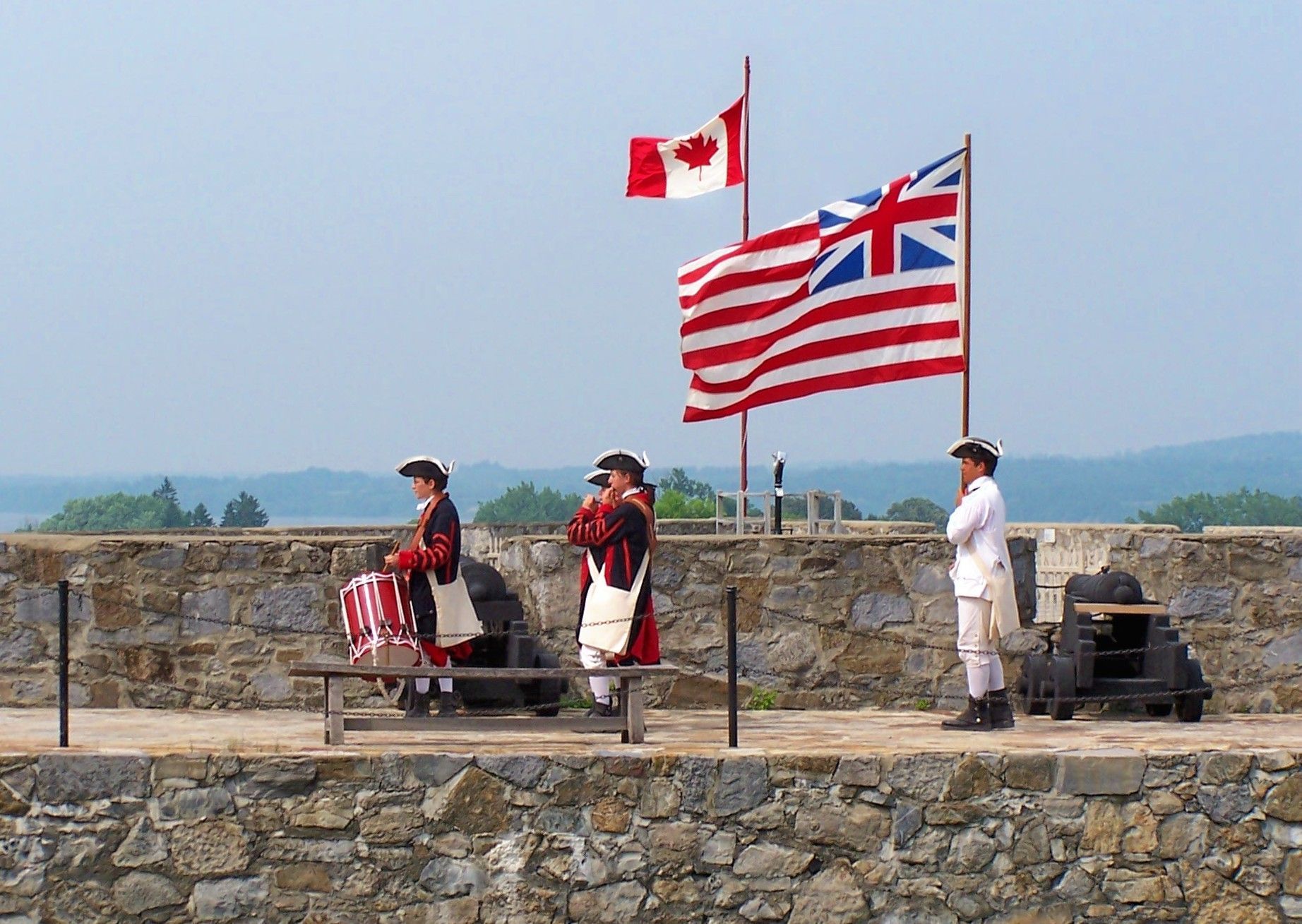Exploring Fort Ticonderoga: A Gateway to American History

Nestled along the shores of Lake Champlain in upstate New York, Fort Ticonderoga stands as a beacon of American history. This remarkably well-preserved 18th-century fortress played pivotal roles in both the French and Indian War and the American Revolutionary War, serving as a battleground for key moments that shaped the nation. Today, Fort Ticonderoga invites visitors to step back in time, offering immersive experiences through reenactments, scenic landscapes, and insightful exhibits.
In this post, we’ll explore the fascinating history of Fort Ticonderoga, what visitors can expect to experience, and why this historic site is a must-visit for both history enthusiasts and curious travelers alike.
A Brief History of Fort Ticonderoga
Fort Ticonderoga's story begins in 1755, during the height of colonial conflict between European powers in North America. Originally constructed by the French, it was named Fort Carillon and served as a strategic outpost during the French and Indian War (1754–1763). The French used the fort to control access between Canada and the Hudson River Valley, giving them a key position to fend off British advances.
In 1758, Fort Carillon witnessed one of the bloodiest battles of the war during the Battle of Carillon, where 3,600 French soldiers defended the fort against 16,000 British troops. Despite overwhelming odds, the French managed to hold their ground, securing a surprising victory. However, just a year later, in 1759, the British returned with greater force, capturing the fort and renaming it Fort Ticonderoga.
During the American Revolutionary War, Fort Ticonderoga found itself at the center of yet another struggle. In May 1775, a small force of Green Mountain Boys, led by Ethan Allen and Benedict Arnold, captured the fort from the British in a daring surprise attack. This marked the first American victory of the Revolutionary War and gave the Continental Army access to much-needed artillery, which was transported to Boston by Henry Knox and used in the siege that ultimately forced the British out of the city.
Although the fort changed hands a few more times during the war, its strategic importance gradually diminished. By 1781, Fort Ticonderoga was largely abandoned, falling into ruin as its military significance faded.
The Restoration of Fort Ticonderoga
In the 19th century, the crumbling ruins of Fort Ticonderoga captured the imagination of Americans seeking to preserve the nation's history. By 1908, the Pell family, led by Stephen and Sarah Pell, began a comprehensive restoration of the fort. Their dedication transformed Fort Ticonderoga from an overgrown relic into a meticulously restored historical site. Today, thanks to their efforts, visitors can experience the fort much as it appeared during its active years, offering a glimpse into the daily lives of soldiers and the conflicts that shaped early America.
What to Expect During Your Visit
Fort Ticonderoga is more than just a historic landmark—it’s an interactive experience that allows visitors to step back in time. Spread across more than 2,000 acres of beautifully maintained grounds, the fort offers plenty to see and do, making it an ideal destination for a full-day adventure. Here’s what you can expect when you visit:

1. Exploring the Fort’s Historic Structures
Walking through the gates of Fort Ticonderoga, you’ll be immediately struck by the scale of the stone fortress. The walls, bastions, and defensive structures have been carefully restored to their 18th-century grandeur. Inside, visitors can explore the barracks, parade grounds, and various rooms used by officers and soldiers.
Each part of the fort has been thoughtfully curated, with historical artifacts and displays that provide insight into the daily life of its inhabitants. You’ll find cannons lining the walls, and you can imagine what it might have been like for a young soldier tasked with defending this crucial outpost.
2. The Museum and Exhibits
The Fort Ticonderoga Museum houses an impressive collection of artifacts from the French and Indian War, the Revolutionary War, and beyond. The museum’s collection includes over 30,000 military and domestic objects, ranging from weapons and uniforms to personal items used by the soldiers who lived at the fort.
One of the highlights is the museum’s extensive collection of 18th-century firearms and artillery, giving visitors a chance to see the tools of war that shaped the battles fought at the fort. The exhibits also delve into the fort’s broader impact on American history, including the stories of individuals like Ethan Allen and Benedict Arnold, whose actions here helped spark the American Revolution.
3. Daily Reenactments and Demonstrations
A visit to Fort Ticonderoga wouldn’t be complete without experiencing one of the many daily reenactments and demonstrations that bring history to life. The fort employs costumed interpreters who portray soldiers from various periods of the fort’s history, allowing visitors to see firsthand what military life was like in the 18th century.

Musket and cannon demonstrations are a major draw for visitors, offering the sights, sounds, and even smells of battle. Watching these weapons fire across the fort’s grounds gives a visceral sense of the power and danger that these soldiers faced. The interpreters also lead military drills, giving visitors a chance to witness the discipline and precision required of the fort’s garrison.
For those interested in the finer details of military life, there are also demonstrations of blacksmithing, carpentry, and other essential trades that kept the fort running.
4. Guided Tours
Fort Ticonderoga offers a variety of guided tours, each focusing on different aspects of the fort’s history. The Signature Tour is a great introduction to the fort, providing an overview of its role in both the French and Indian War and the Revolutionary War. For those looking for a deeper dive, specialized tours focus on topics like the fort’s artillery, the lives of soldiers, and the fort’s role in shaping the course of American history.
One of the most unique experiences is the Cannon Tour, which takes visitors through the history and technology of artillery used at the fort. You’ll learn how cannons were made, transported, and fired, and get a closer look at the many cannons on display throughout the grounds.
5. The King’s Garden
While Fort Ticonderoga is known for its military history, its King’s Garden is a peaceful retreat that showcases the beauty of 18th-century landscaping. This formal garden was originally designed in the 1920s by landscape architect Marian Cruger Coffin and is modeled after the grand European gardens of the time.
Visitors can stroll through the garden’s manicured flowerbeds, which are filled with colorful blooms throughout the spring and summer. The garden also offers stunning views of Lake Champlain, making it a perfect spot for a quiet moment of reflection after exploring the fort.
6. Boat Cruises on Lake Champlain
For a different perspective on Fort Ticonderoga, consider taking a scenic boat cruise on Lake Champlain. The fort’s location on the lake was critical to its strategic importance, and a boat tour provides a unique opportunity to see the fort from the water, much like soldiers and traders would have in the 18th century.
The narrated tours offer insights into the history of the region, including the role Lake Champlain played in both the French and Indian War and the Revolutionary War. It’s also a great way to enjoy the natural beauty of the area, with sweeping views of the Adirondack Mountains and Vermont’s Green Mountains.
7. Hiking Trails and Outdoor Adventures
For outdoor enthusiasts, Fort Ticonderoga offers a variety of hiking trails that wind through the fort’s extensive grounds. The Carillon Battlefield Trail is a favorite among visitors, as it takes hikers through the site of the 1758 Battle of Carillon, offering interpretive signs that provide context for the events that unfolded here.
For a more challenging hike, the Mount Defiance Trail leads to the summit of Mount Defiance, where visitors are rewarded with panoramic views of Fort Ticonderoga, Lake Champlain, and the surrounding landscape. The mountain played a key role in the fort’s history, as British forces used it to gain a tactical advantage over the Americans during the Revolutionary War.
Special Events and Seasonal Activities
Throughout the year, Fort Ticonderoga hosts a variety of special events that make a visit even more memorable. Living history weekends, reenactments of famous battles, and seasonal festivals bring the fort’s history to life in exciting and engaging ways.
In the summer, the fort hosts the French and Indian War Encampment, one of the largest reenactments in the U.S., featuring hundreds of reenactors portraying soldiers, camp followers, and Native Americans. The fort also hosts the Revolutionary War Reenactment, where visitors can watch as American and British forces clash once again in a thrilling recreation of the fort’s role in the Revolution.
During the fall, the Heritage Harvest and Horse Festival combines history with agriculture, offering demonstrations of 19th-century farming techniques, horse-drawn carriage rides, and a celebration of the fort’s gardens and orchards.
Practical Information for Visitors
Fort Ticonderoga is open from May to October, providing visitors with daily activities, tours, and special events throughout the season. Located off Route 74 in Ticonderoga, New York, the fort is easily accessible by car, with ample free parking available on-site. For a full day of exploration, visitors can enjoy the café, which serves light meals, snacks, and beverages, or relax in picnic areas with scenic views. The fort also features a gift shop with historically themed items and souvenirs.
The site is family-friendly, offering plenty of activities and events designed for children, including hands-on history programs. For those interested in extending their stay, the nearby town of Ticonderoga offers various accommodations and dining options. Tickets can be purchased online or on-site, and it's recommended to check the fort’s website for updated schedules, special events, and visitor guidelines before planning your trip to make the most of your visit.